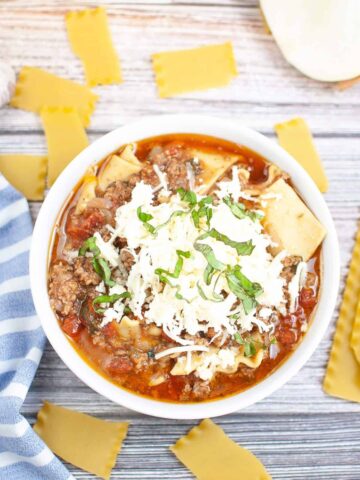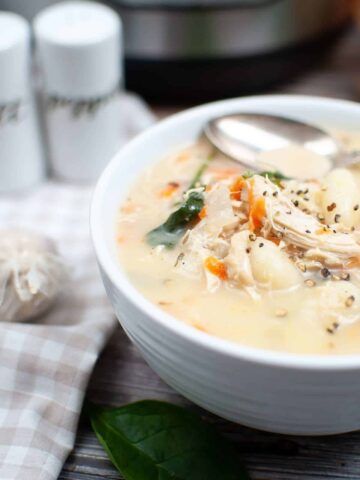The Instant Pot has become a popular kitchen appliance, praised for its convenience and versatility in cooking a wide variety of dishes. One question that frequently arises is whether the Instant Pot can be used as a slow cooker. The answer is yes, you can use an Instant Pot as a slow cooker, and there are several benefits to doing so.
The benefits of using an Instant Pot as a Slow Cooker
There are several benefits to using an Instant Pot as a slow cooker. Firstly, the Instant Pot has a sauté function that allows you to brown your meat before slow cooking, which enhances the flavor of your dish. Secondly, the Instant Pot has a keep warm function that automatically turns on when your slow-cooked dish is done, ensuring that your food stays warm until you're ready to serve it. Thirdly, the Instant Pot can be used as a pressure cooker as well as a slow cooker, giving you the best of both worlds in terms of cooking methods.
Another benefit of using an Instant Pot as a slow cooker is that it is a versatile kitchen appliance that can be used for a variety of cooking tasks. In addition to slow cooking and pressure cooking, the Instant Pot can also be used for steaming, sautéing, and even making yogurt. This means that you can save space in your kitchen by using one appliance for multiple tasks.
Finally, using an Instant Pot as a slow cooker can save you time and energy. Unlike traditional slow cookers, the Instant Pot has a built-in timer and can cook your food faster than a traditional slow cooker. Additionally, the Instant Pot is energy-efficient and uses less electricity than a traditional oven or stovetop, which can help you save money on your energy bills.
How to Convert Instant Pot Settings to Slow Cooker Temperatures
One of the main differences between using an Instant Pot as a slow cooker and using a traditional slow cooker is the temperature settings. While the Instant Pot has a low and high slow-cooking temperature setting, these are not equivalent to the low and high settings on a traditional slow cooker. To convert Instant Pot settings to slow-cooker temperatures, use the low setting for a traditional slow cooker with the Instant Pot's "less" setting, and the high setting for a traditional slow cooker with the Instant Pot's "normal" setting. It's important to note that cooking times may vary, so it's always a good idea to check your dish periodically to ensure it's cooking at the proper temperature.
Another important factor to consider when converting Instant Pot settings to slow cooker temperatures is the type of dish you are cooking. For example, if you are cooking a dish with a lot of liquid, such as a soup or stew, you may need to adjust the cooking time to ensure that the dish is fully cooked and the flavors have melded together. On the other hand, if you are cooking a dish with a lot of meat, such as a pot roast, you may need to adjust the cooking time to ensure that the meat is tender and fully cooked.
It's also worth noting that the size of your slow cooker or Instant Pot can affect the cooking time and temperature. If you are using a larger slow cooker or Instant Pot, you may need to increase the cooking time or adjust the temperature to ensure that your dish is fully cooked. Conversely, if you are using a smaller slow cooker or Instant Pot, you may need to decrease the cooking time or adjust the temperature to prevent your dish from overcooking.
Is Slow Cooking in an Instant Pot Faster Than a Traditional Slow Cooker?
Slow cooking in an Instant Pot is not necessarily faster than using a traditional slow cooker. However, the Instant Pot does have the added advantage of being able to pressure cook as well as slow cook, which can significantly reduce cooking time. This can be especially beneficial if you're short on time but still want to enjoy a slow-cooked meal.
Additionally, the Instant Pot has the ability to sauté and brown ingredients before slow cooking or pressure cooking, which can save time and reduce the number of dishes needed for a recipe. This feature is not available on most traditional slow cookers, which means you would need to use a separate pan to brown meat or vegetables before adding them to the slow cooker. Overall, the Instant Pot offers more versatility and convenience in the kitchen, making it a popular choice for busy home cooks.
The Differences Between Slow Cooking and Pressure Cooking with an Instant Pot
Slow cooking and pressure cooking are two distinct cooking methods that can be done with an Instant Pot. Slow cooking involves cooking your food over a longer period of time at a lower temperature, whereas pressure cooking involves cooking your food quickly at a higher temperature under pressure. Both methods have their advantages, and the Instant Pot allows you to choose which method is best for your dish.
One advantage of slow cooking with an Instant Pot is that it allows for more tender and flavorful meats. The longer cooking time allows for the meat to break down and become more tender, while also allowing the flavors to meld together. On the other hand, pressure cooking is great for dishes that require a shorter cooking time, such as soups and stews. The high pressure allows for the flavors to be infused quickly, while also retaining the nutrients of the ingredients.
It's important to note that not all dishes are suitable for both slow cooking and pressure cooking. For example, delicate foods such as fish and vegetables may not hold up well under pressure cooking, while tougher cuts of meat may not become as tender with slow cooking. It's important to consider the type of dish you are making and which cooking method will yield the best results.
What are the Best Foods to Slow Cook in an Instant Pot?
Almost any food can be slow-cooked in an Instant Pot, including soups, stews, roasts, and even desserts. Some of the best foods to slow cook in an Instant Pot include chili, pulled pork, chicken noodle soup, and beef stew. Slow-cooking can help to tenderize tougher cuts of meat and infuse your dish with flavor.
Another great food to slow cook in an Instant Pot is risotto. This Italian dish can be time-consuming to make on the stove, but with an Instant Pot, you can have a creamy and flavorful risotto in just a fraction of the time. You can also experiment with different ingredients, such as mushrooms, asparagus, or butternut squash, to create a variety of delicious risotto dishes.
If you're looking for a healthy and easy-to-make meal, try slow-cooking a batch of steel-cut oats in your Instant Pot. Simply add oats, water, and your favorite toppings, such as fruit, nuts, or honey, and let the Instant Pot do the rest. You'll have a nutritious and filling breakfast that will keep you energized throughout the day.
How Long Does It Take to Slow Cook in an Instant Pot Compared to a Traditional Slow Cooker?
Cooking times can vary depending on the specific recipe and the size of the cut of meat you're using. However, as a general rule, it takes about 6-8 hours to slow-cook a dish in an Instant Pot on its low setting, which is comparable to the cooking time in a traditional slow cooker. Cooking time can be reduced if you use the pressure-cooking function of your Instant Pot instead.
Tips for Making Delicious and Tender Meals with Your Instant Pot as a Slow Cooker
To ensure that your slow-cooked meals in your Instant Pot come out delicious and tender, follow these tips:
- Use the sauté function to brown your meat first for added flavor.
- Use the correct temperature setting for your specific recipe.
- Add enough liquid to prevent your dish from drying out during cooking.
- Do not overfill your Instant Pot beyond the recommended fill line, as this can affect the cooking time and result in an unevenly cooked dish.
- Let the pressure release naturally after cooking to prevent overcooking or toughening the meat.
Can You Use the Saute Function on Your Instant Pot While Slow Cooking?
Yes, you can use the sauté function on your Instant Pot while slow cooking. This function allows you to brown your meat before slow cooking, which can improve the flavor of your dish. However, it's important to note that the sauté function will not stay on indefinitely when using it in conjunction with the slow-cooking function, so make sure to brown your meat before turning on the slow-cooker setting.
What Are the Pros and Cons of Using an Instant Pot as a Slow Cooker?
Like any cooking method or appliance, using an Instant Pot as a slow cooker has its pros and cons. Some of the pros include the added advantage of the sauté function, the ability to pressure cook as well as slow cook, and the keep-warm function. However, some of the cons include the need to convert temperature settings, the possibility of overcooking or drying out your dish if not careful, and the higher price point compared to traditional slow cookers.
In conclusion, the Instant Pot makes a great slow cooker, providing you with the added convenience of the sauté function, the keep-warm function, and the ability to pressure cook as well as slow cook. Just remember to follow proper cooking times and temperature settings, and you'll have delicious and tender meals in no time.




Leave a Reply